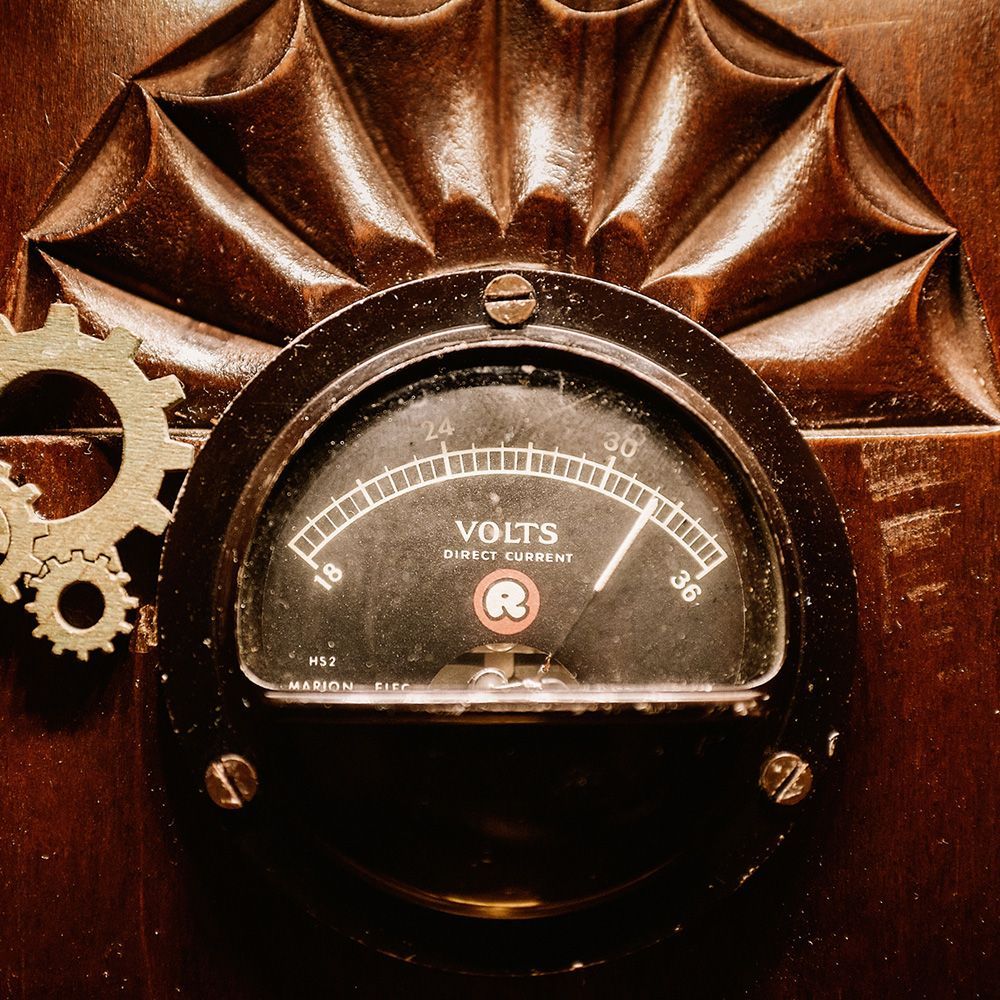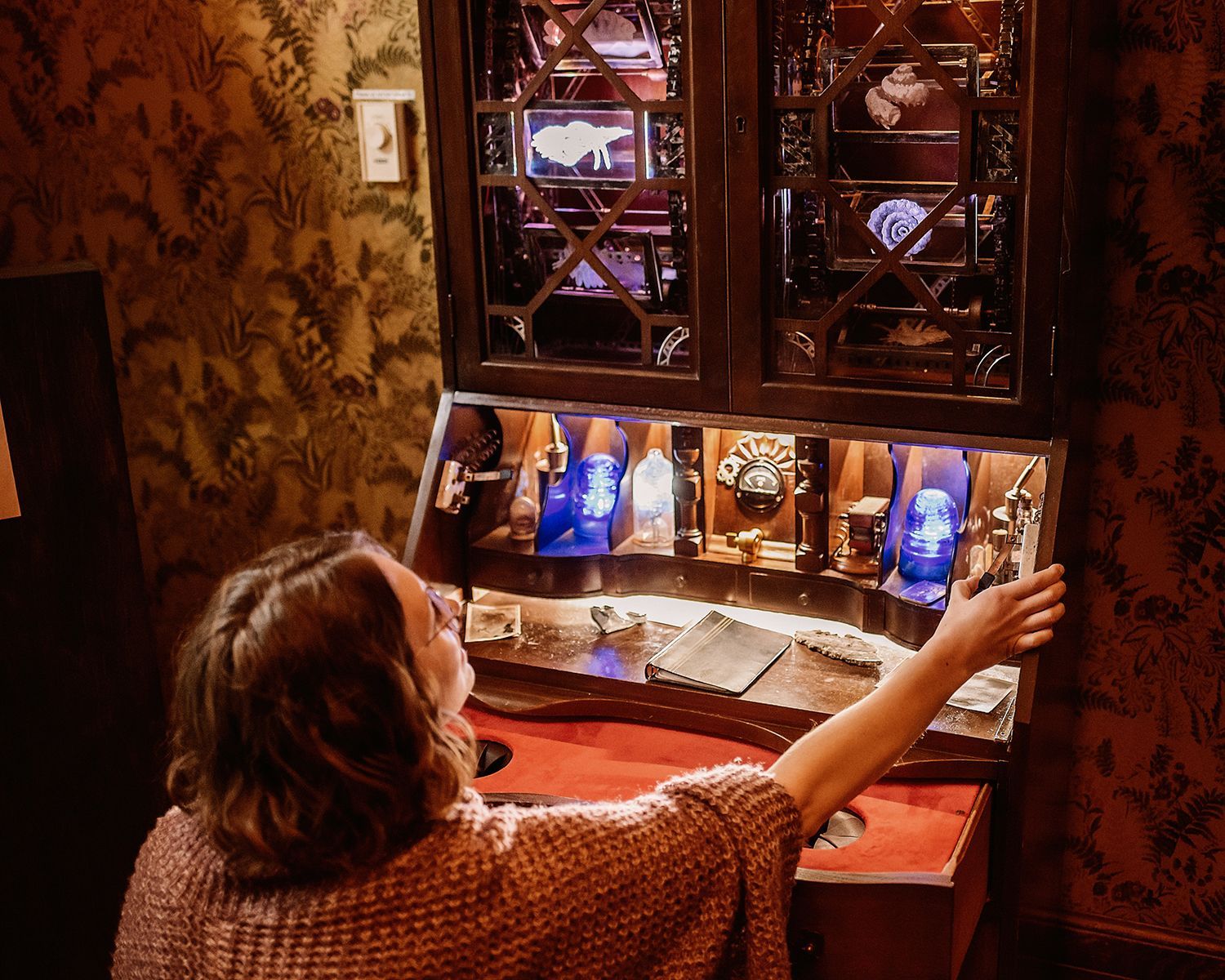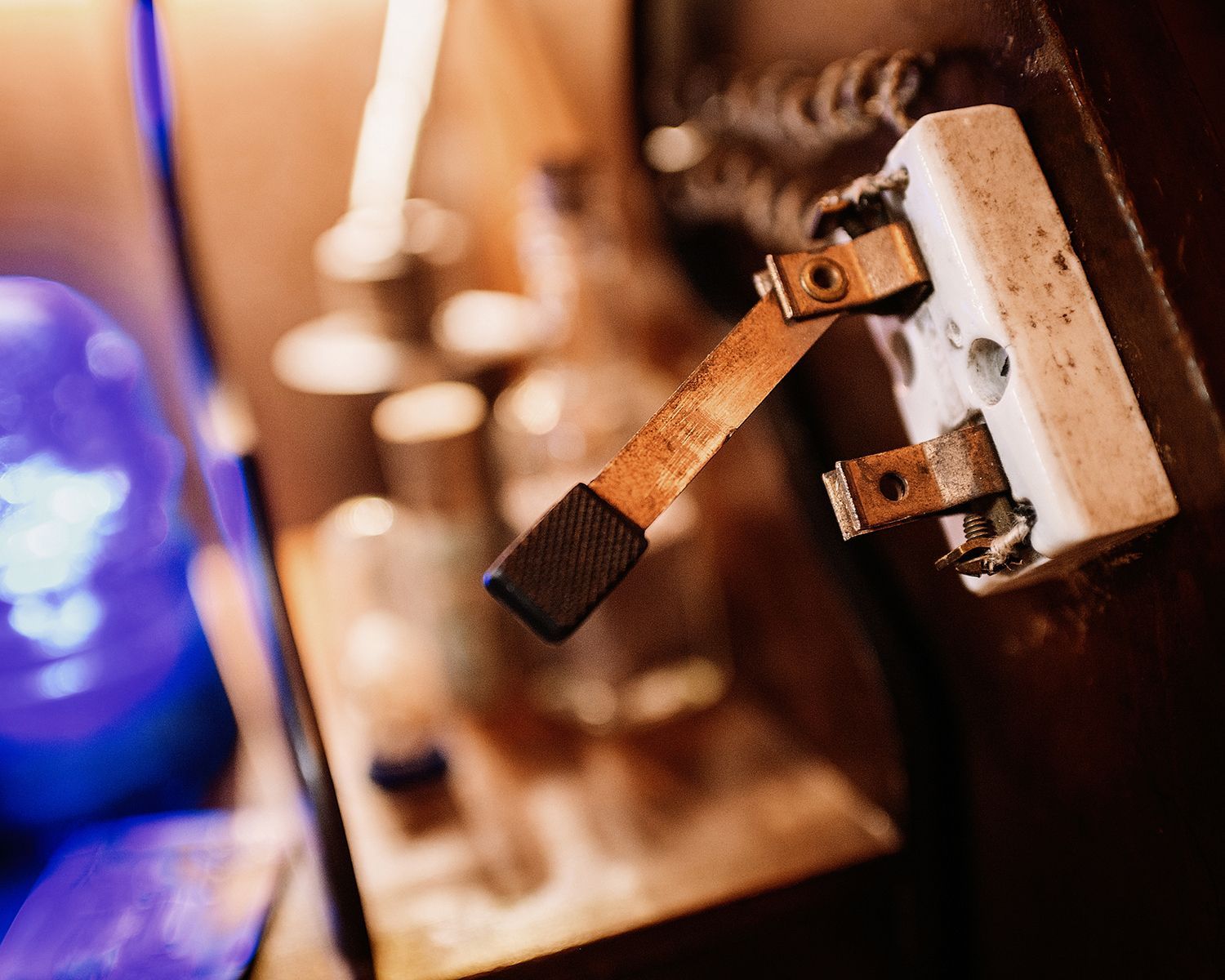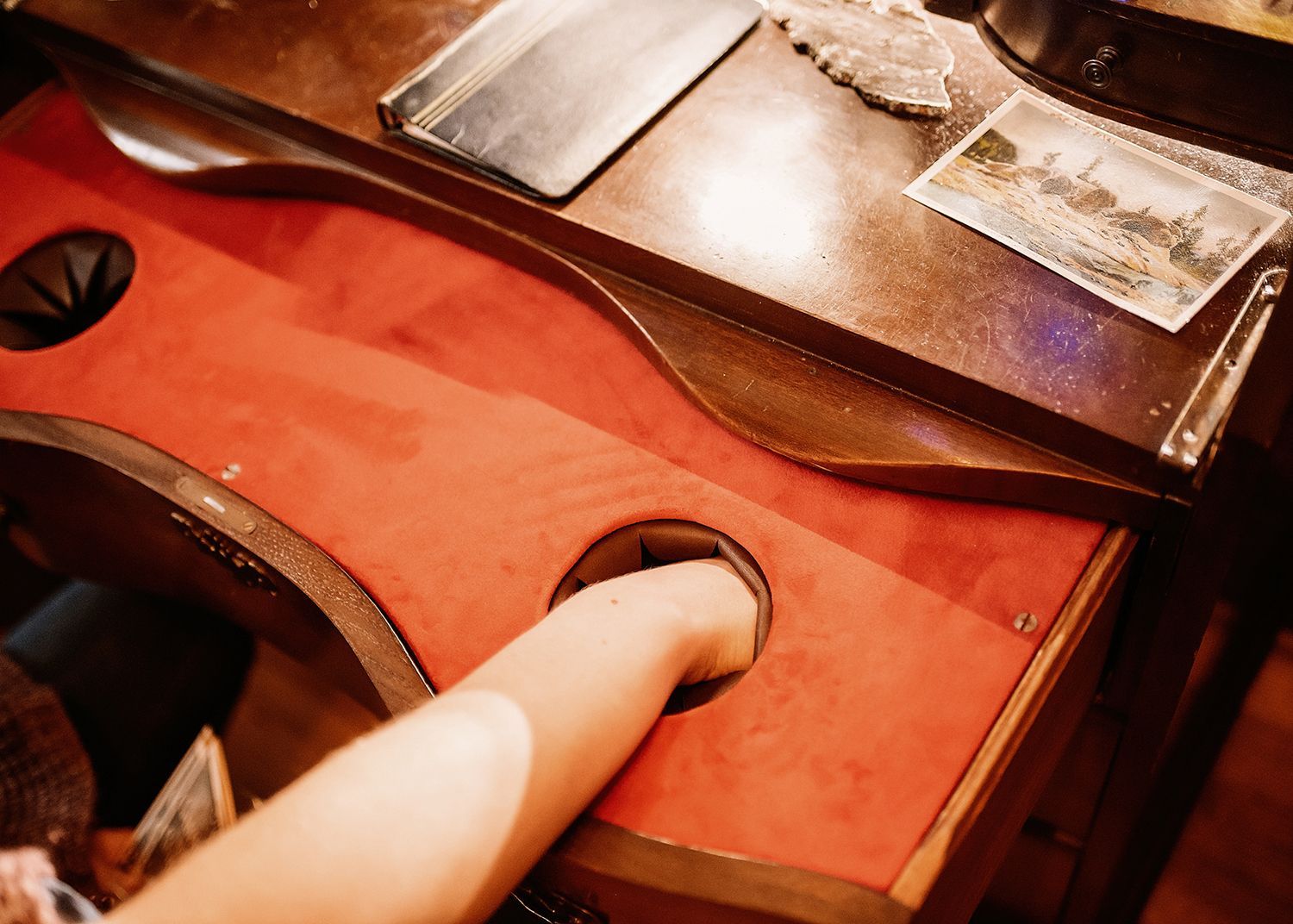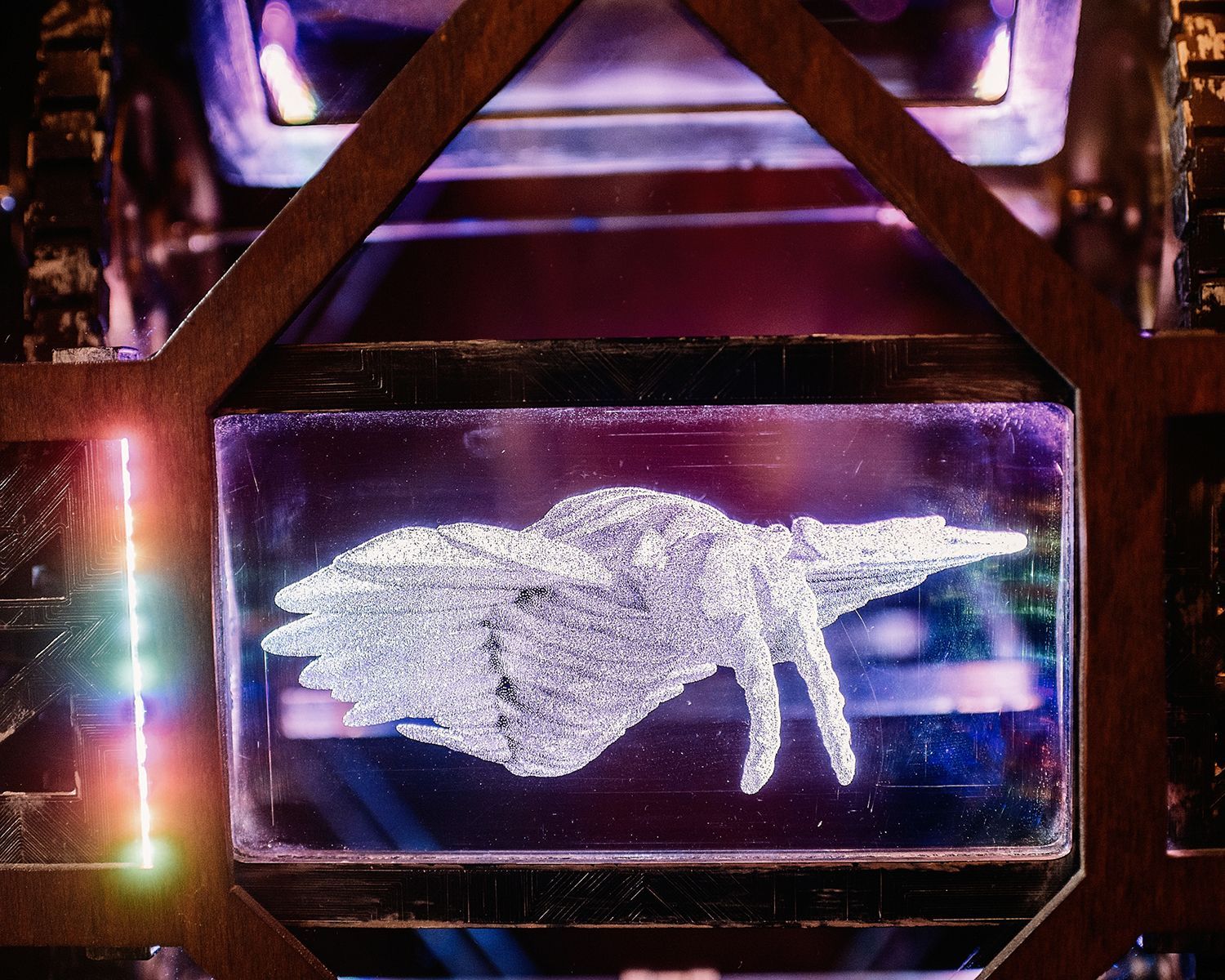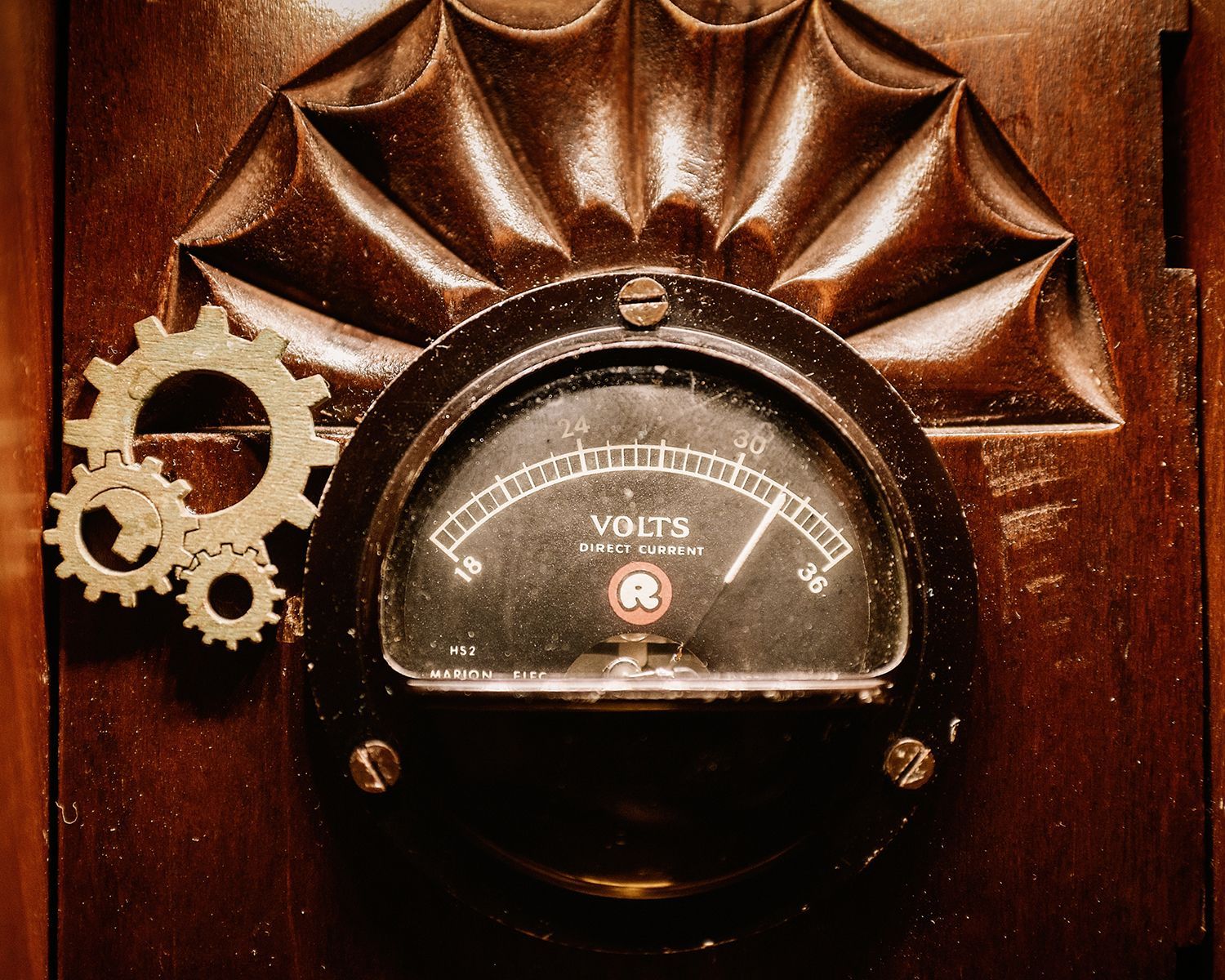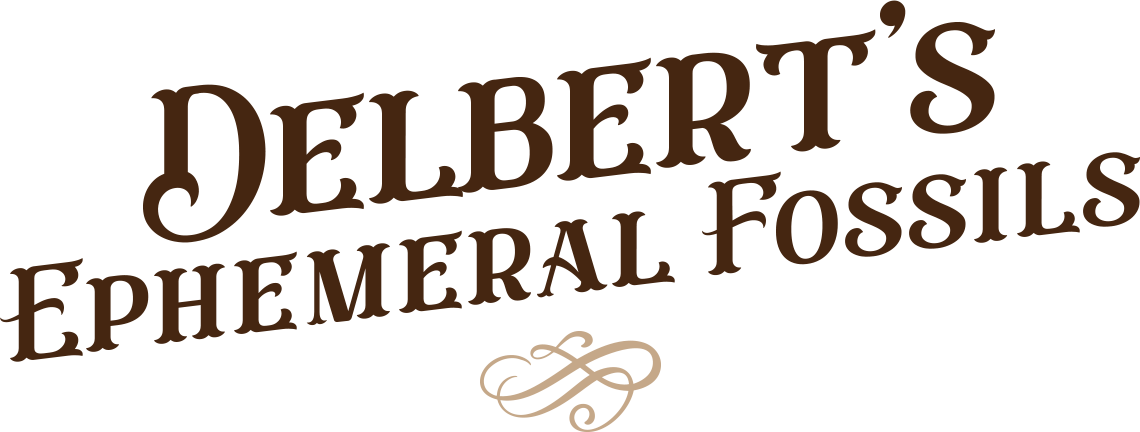
In 1895, near Boulder, Montana, prospector-turned-paleontologist Delbert Heinrich unearthed uniquely fragile fossils of bizarre and fantastical life forms. The petrified remains were extremely difficult to preserve because, when removed from the earth, they disintegrated immediately. After many a disastrous experiment, Delbert perfected an ingenious method of storage: the fossils had to be kept in absolute darkness and bathed in radon gas emitted by uranium ore. So they could be observed, he created detailed images of the specimens on photographic plates, similar to x-rays. Inside specially prepared drawers, visitors may touch the fossils, and perhaps match what they feel to the photographic plates displayed above.

Steve & Cedar Allison-Bunnell
Father and son duo Steve and Cedar are looking forward to moving into their new home in the Bozeman Cohousing Community later this year. They hope their cats will be happy with the new view from the balcony. Steve and Cedar both work at the Montana Science Center’s STEAMlab, helping kids make things and rehabbing old computers. Cedar collects vintage Macintosh computers. Steve studied natural history collections in graduate school, but he is married to an archivist who has a degree in throwing things out, so his largest collection is of nice pens.
Steve and Cedar meticulously modeled and tested every aspect of their cabinet. The specimens were modeled with a 3D sculpting app. To make the fossils, the creatures were exported as 3D models and printed on the Prusa MK4 3D printers at the STEAMlab. To make the illuminated plates, a rendering of each creature was exported as an image and laser engraved on acrylic with the Glowforge Pro laser cutter at the STEAMlab. The gears and belts for the image plates were also 3D printed. Steve and Cedar’s work can be viewed and purchased at
the Montana Science Center.

